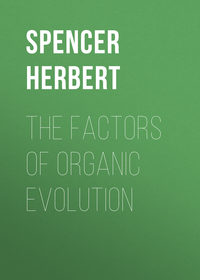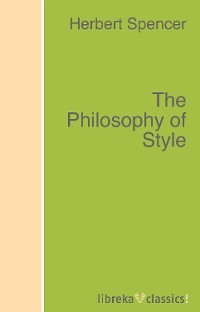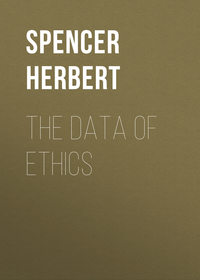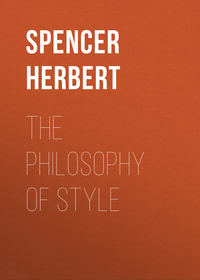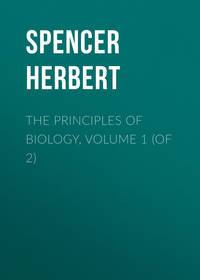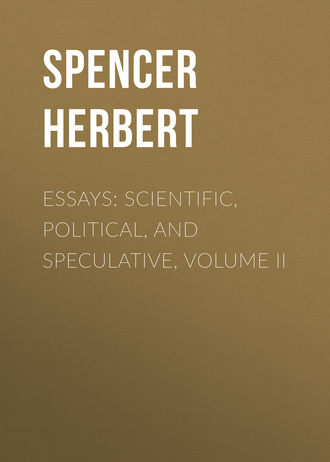 полная версия
полная версияEssays: Scientific, Political, and Speculative, Volume II
• that which treats of the phenomena themselves:
• in their elements: ABSTRACT-CONCRETE SCIENCE (Mechanics, Physics, Chemistry, etc.)
• in their totalities: CONCRETE SCIENCE (Astronomy, Geology, Biology, Psychology, Sociology, etc.)
It is needful to define the words abstract and concrete as thus used; since they are sometimes used with other meanings. M. Comte divides Science into abstract and concrete; but the divisions which he distinguishes by these names are quite unlike those above made. Instead of regarding some Sciences as wholly abstract, and others as wholly concrete, he regards each Science as having an abstract part, and a concrete part. There is, according to him, an abstract mathematics and a concrete mathematics – an abstract biology and concrete biology. He says: – “Il faut distinguer, par rapport à tous les ordres de phénomènes, deux genres de sciences naturelles: les unes abstraites, générales, ont pour objet la découverte des lois qui régissent les diverses classes de phénomènes, en considérant tous les cas qu’on peut concevoir; les autres concrètes, particulières, descriptives, et qu’on désigne quelquefois sous le nom de sciences naturelles proprement dites, consistent dans l’application de ces lois a l’histoire effective des différens êtres existans.” And to illustrate the distinction, he names general physiology as abstract, and zoology and botany as concrete. Here it is manifest that the words abstract and general are used as synonymous. They have, however, different meanings; and confusion results from not distinguishing their meanings. Abstractness means detachment from the incidents of particular cases. Generality means manifestation in numerous cases. On the one hand, the essential nature of some phenomenon is considered, apart from disguising phenomena. On the other hand, the frequency of the phenomenon, with or without disguising phenomena, is the thing considered. Among the phenomena presented by numbers, which are purely ideal, the two coincide; but excluding these, an abstract truth is not realizable to perception in any case of which it is asserted, whereas a general truth is realizable to perception in every case of which it is asserted. Some illustrations will make the distinction clear. Thus it is an abstract truth that the angle contained in a semi-circle is a right angle – abstract in the sense that though it does not hold of actually-constructed semi-circles and angles, which are always inexact, it holds of the ideal semi-circles and angles abstracted from real ones; but this is not a general truth, either in the sense that it is commonly manifested in Nature, or in the sense that it is a space-relation that comprehends many minor space-relations: it is a quite special space-relation. Again, that the momentum of a body causes it to move in a straight line at a uniform velocity, is an abstract-concrete truth – a truth abstracted from certain experiences of concrete phenomena; but it is by no means a general truth: so little generality has it, that no one fact in Nature displays it. Conversely, surrounding things supply us with hosts of general truths that are not in the least abstract. It is a general truth that the planets go round the Sun from West to East – a truth which holds good in several hundred cases (including the cases of the planetoids); but this truth is not at all abstract, since it is perfectly realized as a concrete fact in every one of these cases. Every vertebrate animal whatever, has a double nervous system; all birds and all mammals are warm-blooded – these are general truths, but they are concrete truths: that is to say, every vertebrate animal individually presents an entire and unqualified manifestation of this duality of the nervous system; every living bird exemplifies absolutely or completely the warm-bloodedness of birds. What we here call, and rightly call, a general truth, is simply a proposition which sums up a number of our actual experiences; and not the expression of a truth drawn from our actual experiences, but never presented to us in any of them. In other words, a general truth colligates a number of particular truths; while an abstract truth colligates no particular truths, but formulates a truth which certain phenomena all involve, though it is actually seen in none of them.
Limiting the words to their proper meanings as thus defined, it becomes manifest that the three classes of Sciences above separated, are not distinguishable at all by differences in their degrees of generality. They are all equally general; or rather they are all, considered as groups, universal. Every object whatever presents at once the subject-matter for each of them. In every fragment of substance we have simultaneously illustrated the abstract truths of relation in Time and Space; the abstract-concrete truths in conformity with which the fragment manifests its several modes of force; and the concrete truths resulting from the joint manifestation of these modes of force, and which give to the fragment the characters by which it is known as such or such. Thus these three classes of Sciences severally formulate different, but co-extensive, classes of facts. Within each group there are truths of greater and less generality: there are general abstract truths, and special abstract truths; general abstract-concrete truths, and special abstract-concrete truths; general concrete truths, and special concrete truths. But while within each class there are groups and sub-groups and sub-sub-groups which differ in their degrees of generality, the classes themselves differ only in their degrees of abstractness. 3
Let us pass to the sub-divisions of these classes. The first class is separable into two parts – the one containing universal truths, the other non-universal truths. Dealing wholly with relations apart from related things, Abstract Science considers first, that which is common to all relations whatever; and, second, that which is common to each order of relations. Besides the indefinite and variable connexions which exist among phenomena, as occurring together in Space and Time, we find that there are also definite and invariable connexions – that between each kind of phenomenon and certain other kinds of phenomena, there exist uniform relations. This is a universal abstract truth – that there is an unchanging order, or fixity of law, in Space and Time. We come next to the several kinds of unchanging order, which, taken together, form the subjects of the second division of Abstract Science. Of this second division, the most general sub-division is that which deals with the natures of the connexions in Space and Time, irrespective of the terms connected. The conditions under which we may predicate a relation of coincidence or proximity in Space and Time (or of non-coincidence or non-proximity) from the subject-matter of Logic. Here the natures and amounts of the terms between which the relations are asserted (or denied) are of no moment: the propositions of Logic are independent of any qualitative or quantitative specification of the related things. The other sub-division has for its subject-matter, the relations between terms which are specified quantitatively but not qualitatively. The amounts of the related terms, irrespective of their natures, are here dealt with; and Mathematics is a statement of the laws of quantity considered apart from reality. Quantity considered apart from reality, is occupancy of Space or Time; and occupancy of Space or Time is measured by units of one or other order, but of which the ultimate ones are simply separate places in consciousness, either coexistent or sequent. Among units that are unspecified in their natures (extensive, protensive, or intensive), but are ideally endowed with existence considered apart from attributes, the quantitative relations that arise, are those most general relations expressed by numbers. Such relations fall into either of two orders, according as the units are considered simply as capable of filling separate places in consciousness, or according as they are considered as filling places that are not only separate, but equal. In the one case, we have that indefinite calculus by which numbers of abstract existences, but not sums of abstract existence, are predicable. In the other case, we have that definite calculus by which both numbers of abstract existences and sums of abstract existence are predicable. Next comes that division of Mathematics which deals with the quantitative relations of magnitudes (or aggregates of units) considered as coexistent, or as occupying Space – the division called Geometry. And then we arrive at relations, the terms of which include both quantities of Time and quantities of Space – those in which times are estimated by the units of space traversed at a uniform velocity, and those in which equal units of time being given, the spaces traversed with uniform or variable velocities are estimated. These Abstract Sciences, which are concerned exclusively with relations and with the relations of relations, may be grouped as shown in Table I.
• TABLE I.
• ABSTRACT SCIENCE.
• Universal law of relation – an expression of the truth that uniformities of connexion obtain among modes of Being, irrespective of any specification of the natures of the uniformities of connexion.
• Laws of relations
• that are qualitative; or that are specified in their natures as relations of coincidence or proximity in Time and Space, but not necessarily in their terms the natures and amount of which are indifferent. (LOGIC.)4
• that are quantitative (MATHEMATICS)
• negatively: the terms of the relations being definitely-related sets of positions in space; and the facts predicated being the absences of certain quantities. (Geometry of Position.5)
• positively: the terms being magnitudes composed of
• units that are equal only as having independent existences. (Indefinite Calculus.6)
• equal units
• the equality of which is not defined as extensive, protensive, or intensive (Definite Calculus)
• when their numbers are completely specified (Arithmetic.)
• when their numbers are specified only
• in their relations (Algebra.)
• in the relations of their relations. (Calculus of Operations.)
• the equality of which is that of extension
• considered in their relations of coexistence. (Geometry.)
• considered as traversed in Time
• that is wholly indefinite. (Kinematics.)
• that is divided into equal units (Geometry of Motion.7)
Passing from the Sciences concerned with the ideal or unoccupied forms of relations, and turning to the Sciences concerned with real relations, or the relations among realities, we come first to those Sciences which treat of realities, not as they are habitually manifested, but with realities as manifested in their different modes, when these are artificially separated from one another. While the Abstract Sciences are wholly ideal, relatively to the Abstract-Concrete and Concrete Sciences; the Abstract-Concrete Sciences are partially ideal, relatively to the Concrete Sciences. Just as Logic and Mathematics generalize the laws of relation, qualitative and quantitative, apart from related things; so, Mechanics, Physics, Chemistry generalize the laws of relation which different modes of Matter and Motion conform to, when severally disentangled from those actual phenomena in which they are mutually modified. Just as the geometrician formulates the properties of lines and surfaces, independently of the irregularities and thicknesses of lines and surfaces as they really exist; so the physicist and the chemist formulate the manifestations of each mode of force, independently of the disturbances in its manifestations which other modes of force cause in every actual case. In works on Mechanics, the laws of motion are expressed without reference to friction and resistance of the medium. Not what motion ever really is, but what it would be if retarding forces were absent, is asserted. If afterwards any retarding force is taken into account, then the effect of this retarding force is dealt with by itself: neglecting the other retarding forces. Consider, again, the generalizations of the physicist respecting molecular motion. The law that light varies inversely as the square of the distance, is absolutely true only when the radiation goes on from a point without dimensions, which it never does; and it also assumes that the rays are perfectly straight, which they cannot be unless the medium differs from all actual media in being perfectly homogeneous. If the disturbing effects of changes of media are investigated, the formulæ expressing the refractions take for granted that the new media entered are homogeneous; which they never really are. Even when a compound disturbance is allowed for, as when the refraction undergone by light in traversing a medium of increasing density, like the atmosphere, is calculated, the calculation still supposes conditions that are unnaturally simple – it supposes that the atmosphere is not pervaded by heterogeneous currents, which it always is. Similarly with the inquiries of the chemist. He does not take his substances as Nature supplies them. Before he proceeds to specify their respective properties, he purifies them – separates from each all trace of every other. Before ascertaining the specific gravity of a gas, he has to free this gas from the vapour of water, usually mixed with it. Before describing the properties of a salt, he guards against any error that may arise from the presence of an uncombined portion of the acid or base. And when he alleges of any element that it has a certain atomic weight, and unites with such and such equivalents of other elements, he does not mean that the results thus expressed are exactly the results of any one experiment; but that they are the results which, after averaging many trials, he concludes would be realized if absolute purity could be obtained, and if the experiments could be conducted without loss. His problem is to ascertain the laws of combination of molecules, not as they are actually displayed, but as they would be displayed in the absence of those minute interferences which cannot be altogether avoided. Thus all Abstract-Concrete Sciences have for their object, analytical interpretation. In every case it is the aim to decompose the phenomenon, and formulate its components apart from one another; or some two or three apart from the rest. Wherever, throughout these Sciences, synthesis is employed, it is for the verification of analysis. 8 The truths elaborated are severally asserted, not as truths exhibited by this or that particular object; but as truths universally holding of Matter and Motion in their more general or more special forms, considered apart from particular objects, and particular places in space.
The sub-divisions of this group of Sciences, may be drawn on the same principle as that on which the sub-divisions of the preceding group were drawn. Phenomena, considered as more or less involved manifestations of force, yield on analysis, certain laws of manifestation which are universal, and other laws of manifestation, which, being dependent on conditions, are not universal. Hence the Abstract-Concrete Sciences are primarily divisible into – the laws of force considered apart from its separate modes, and laws of force considered under each of its separate modes. And this second division of the Abstract-Concrete group, is sub-divisible after a manner essentially analogous. It is needless to occupy space by defining these several orders and genera of Sciences. Table II. will sufficiently explain their relations.
• TABLE II.
• ABSTRACT-CONCRETE SCIENCE.
• Universal laws of forces (tensions and pressures), as deducible from the persistence of force: the theorems of resolution and composition of forces.
• Laws of forces as manifested by matter
• in masses (MECHANICS)
• that are in equilibrium relatively to other masses
• and are solid. (Statics.)
• and are fluid. (Hydrostatics.)
• that are not in equilibrium relatively to other masses
• and are solid. (Dynamics.)
• and are fluid. (Hydrodynamics.)
• in molecules (MOLECULAR MECHANICS)
• when in equilibrium: (Molecular Statics)
• giving statical properties of matter
• general, as impenetrability or space-occupancy.
• special, as the forms resulting from molecular equilibrium.
• giving statico-dynamical properties of matter (cohesion, elasticity, etc.)
• when solid.
• when liquid.
• when gaseous.
• when not in equilibrium: (Molecular Dynamics)
• as resulting in a changed distribution of molecules
• which alters their relative positions homogeneously
• causing increase of volume (expansion, liquefaction, evaporation).
• causing decrease of volume (condensation, solidification, contraction).
• which alters their relative positions heterogeneously (Chemistry)
• producing new relations of molecules (new compounds).
• producing new relations of forces (new affinities).
• as resulting in a changed distribution of molecular motion,
• which, by integration, generates sensible motion.
• which, by disintegration, generates insensible motion, under the forms of {Heat. Light. Electricity. Magnetism.}
We come now to the third great group. We have done with the Sciences which are concerned only with the blank forms of relations under which Being is manifested to us. We have left behind the Sciences which, dealing with Being under its universal mode, and its several non-universal modes regarded as independent, treat the terms of its relations as simple and homogeneous; which they never are in Nature. There remain the Sciences which, taking these modes of Being as they are habitually connected with one another, have for the terms of their relations, those heterogeneous combinations of forces that constitute actual phenomena. The subject-matter of these Concrete-Sciences is the real, as contrasted with the wholly or partially ideal. It is their aim, not to separate and generalize apart the components of all phenomena, but to explain each phenomenon as a product of these components. Their relations are not, like those of the simplest Abstract-Concrete Sciences, relations between one antecedent and one consequent; nor are they, like those of the more involved Abstract-Concrete Sciences, relations between some few antecedents cut off in imagination from all others, and some few consequents similarly cut off; but they are relations each of which has for its terms a complete plexus of antecedents and a complete plexus of consequents. This is manifest in the least involved Concrete Sciences. The astronomer seeks to explain the Solar System. He does not stop short after generalizing the laws of planetary movement, such as planetary movement would be did only a single planet exist; but he solves this abstract-concrete problem, as a step towards solving the concrete problem of the planetary movements as affecting one another. In astronomical language, “the theory of the Moon” means an interpretation of the Moon’s motions, not as determined simply by centripetal and centrifugal forces, but as perpetually modified by gravitation towards the Earth’s equatorial protuberance, towards the Sun, and even towards Venus: forces daily varying in their amounts and combinations. Nor does the astronomer leave off when he has calculated what will be the position of a given body at a given time, allowing for all perturbations; but he goes on to consider the effects produced by reactions on the perturbing masses. And he further goes on to consider how the mutual perturbations of the planets cause, during a long period, increasing deviations from a mean state; and then how compensating perturbations cause continuous decrease of the deviations. That is, the goal towards which he ever strives, is a complete explanation of these complex planetary motions in their totality. Similarly with the geologist. He does not take for his problem only those irregularities of the Earth’s crust that are worked by denudation; or only those which igneous action causes. He does not seek simply to understand how sedimentary strata were formed; or how faults were produced; or how moraines originated; or how the beds of Alpine lakes were scooped out. But taking into account all agencies co-operating in endless and ever-varying combinations, he aims to interpret the entire structure of the Earth’s crust. If he studies separately the actions of rain, rivers, glaciers, icebergs, tides, waves, volcanoes, earthquakes, etc.; he does so that he may be better able to comprehend their joint actions as factors in geological phenomena: the object of his science being to generalize these phenomena in all their intricate connexions, as parts of one whole. In like manner Biology is the elaboration of a complete theory of Life, in each and all of its involved manifestations. If different aspects of its phenomena are investigated apart – if one observer busies himself in classing organisms, another in dissecting them, another in ascertaining their chemical compositions, another in studying functions, another in tracing laws of modification; they are all, consciously or unconsciously, helping to work out a solution of vital phenomena in their entirety, both as displayed by individual organisms and by organisms at large. Thus, in these Concrete Sciences, the object is the converse of that which the Abstract-Concrete Sciences propose to themselves. In the one case we have analytical interpretation; while in the other case we have synthetical interpretation. Instead of synthesis being used merely to verify analysis; analysis is here used only to aid synthesis. Not to formulate the factors of phenomena is now the object; but to formulate the phenomena resulting from these factors, under the various conditions which the Universe presents.
This third class of Sciences, like the other classes, is divisible into the universal and the non-universal. As there are truths which hold of all phenomena in their elements; so there are truths which hold of all phenomena in their totalities. As force has certain ultimate laws common to its separate modes of manifestation, so in those combinations of its modes which constitute actual phenomena, we find certain ultimate laws that are conformed to in every case. These are the laws of the re-distribution of force. Since we can become conscious of a phenomenon only by some change wrought in us, every phenomenon necessarily implies re-distribution of force – change in the arrangements of matter and motion. Alike in molecular movements and the movements of masses, one great uniformity may be traced. A decreasing quantity of motion, sensible or insensible, always has for its concomitant an increasing aggregation of matter; and, conversely, an increasing quantity of motion, sensible or insensible, has for its concomitant a decreasing aggregation of matter. Give to the molecules of any mass, more of that insensible motion which we call heat, and the parts of the mass become somewhat less closely aggregated. Add a further quantity of insensible motion, and the mass so far disintegrates as to become liquid. Add still more insensible motion, and the mass disintegrates so completely as to become gas; which occupies a greater space with every extra quantity of insensible motion given to it. On the other hand, every loss of insensible motion by a mass, gaseous, liquid, or solid, is accompanied by a progressing integration of the mass. Similarly with sensible motions, be the bodies moved large or small. Augment the velocities of the planets, and their orbits will enlarge – the Solar System will occupy a wider space. Diminish their velocities, and their orbits will lessen – the Solar System will contract, or become more integrated. And in like manner we see that sensible motions given to bodies on the Earth’s surface involve partial disintegrations of the bodies from the Earth; while the loss of their motions are accompanied by their re-integration with the Earth. In all changes we have either an integration of matter and concomitant dissipation of motion; or an absorption of motion and concomitant disintegration of matter. And where, as in living bodies, these processes go on simultaneously, there is an integration of matter proportioned to the dissipation of motion, and an absorption of motion proportioned to the disintegration of matter. Such, then, are the universal laws of that re-distribution of matter and motion everywhere going on – a re-distribution which results in Evolution so long as the aggregation of matter and dispersion of motion predominate; but which results in Dissolution where there is a predominant aggregation of motion and dispersion of matter. Hence we have a division of Concrete Science which bears towards the other Concrete Sciences, a relation like that which the Universal Law of Relation bears to Mathematics, and like that which Universal Mechanics (composition and resolution of forces) bears to Physics. We have a division of Concrete Science which generalizes those concomitants of this re-distribution that hold good among all orders of concrete objects – a division which explains why, along with a predominating integration of matter and dissipation of motion, there goes a change from an indefinite, incoherent homogeneity, to a definite, coherent heterogeneity; and why a reverse re-distribution of matter and motion, is accompanied by a reverse structural change. Passing from this universal Concrete Science, to the non-universal Concrete Sciences; we find that these are primarily divisible into the science which deals with the re-distributions of matter and motion among masses in space, consequent on their mutual actions as wholes; and the science which deals with the re-distributions of matter and motion consequent on the mutual actions of the parts of each mass. And of these equally general Sciences, this last is re-divisible into the Science which is limited to the concomitants of re-distribution among the parts of each mass when regarded as independent, and the Science which takes into account the molecular motion received by radiation from other masses. But these sub-divisions, and their sub-sub-divisions, will be best seen in the annexed Table III.





